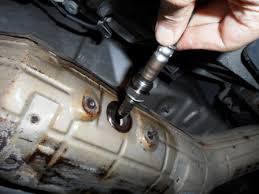What is a Rear Oxygen Sensor and How Does It Work?
The rear oxygen sensor (also known as the downstream O2 sensor) is located behind the catalytic converter. Its main job is to monitor how well the catalytic converter is cleaning the exhaust gases. Unlike the front O2 sensor, which measures air-fuel ratios for engine adjustments, the rear sensor ensures emissions remain low and helps keep your vehicle compliant with environmental standards.
This sensor sends signals to your vehicle’s computer (ECU). If it detects poor catalytic converter performance or incorrect oxygen levels, the Check Engine Light may illuminate.
Why the Rear Oxygen Sensor Matters
A failing rear O2 sensor can cause:
- Failed emissions tests
- Poor fuel efficiency
- Rough engine performance
- Damage to the catalytic converter over time
Replacing a faulty sensor ensures your engine runs clean, improves mileage, and prevents more expensive repairs.
Important to Know:
- Rear O2 sensors typically last 60,000–100,000 miles, but exposure to heat, carbon buildup, or oil leaks can shorten their lifespan.
- If your catalytic converter has been replaced, the rear O2 sensor should often be replaced at the same time.
- A diagnostic scan is usually performed to confirm which sensor (front or rear) is faulty.
How Rear Oxygen Sensor Replacement is Done:
- Perform a diagnostic scan to verify the faulty O2 sensor.
- Safely raise and support the vehicle.
- Disconnect the electrical connector of the rear oxygen sensor.
- Remove the old sensor from the exhaust pipe or catalytic converter.
- Install a new OEM-quality oxygen sensor.
- Reconnect wiring and clear any error codes.
- Test drive to ensure proper engine and emissions system operation.
When to Replace the Rear Oxygen Sensor:
- Every 60,000–100,000 miles as part of routine maintenance.
- Immediately if your vehicle fails an emissions test.
- Whenever the Check Engine Light indicates a rear O2 sensor failure.
Signs You May Need a Rear O2 Sensor Replacement:
- Illuminated Check Engine Light
- Drop in fuel efficiency
- Failed emissions inspection
- Rough idling or engine hesitation
- Sulfur/rotten egg smell from exhaust
How Important is This Service?
The rear oxygen sensor ensures your emissions system is functioning properly and keeps harmful gases out of the environment. At Nationwide Mechanics, we use top-quality diagnostic tools and replacement sensors to restore your vehicle’s efficiency, performance, and compliance with emissions standards.




